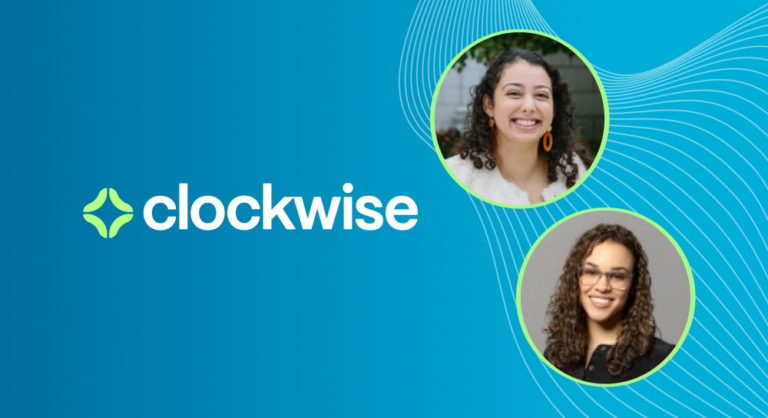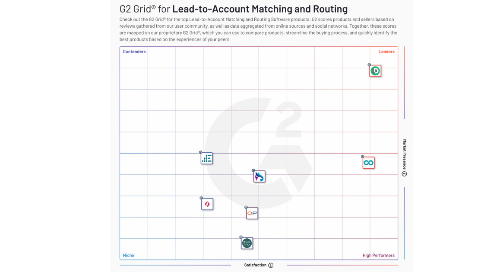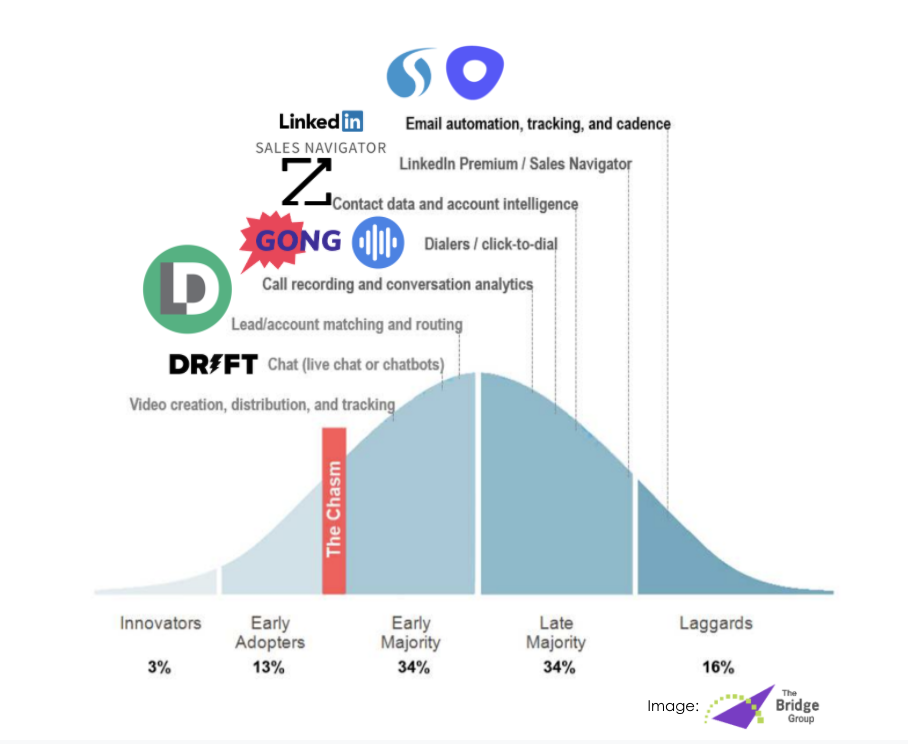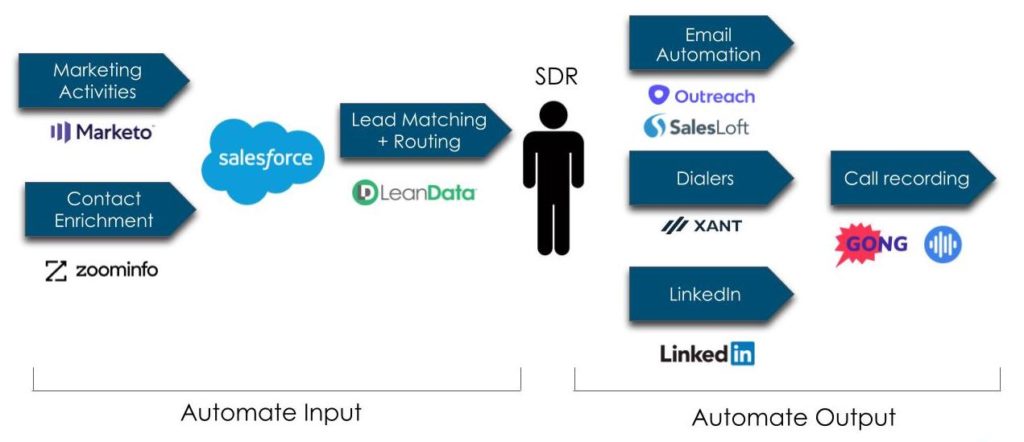Sales Development Representatives (SDRs) and related titles (BDRs, MDRs, and ADRs) are critical players in delivering a consistent pipeline for the majority of B2B companies. Whether your company’s go-to-market (GTM) motion is primarily inbound, outbound, ABM, channel, or a hybrid of all of the above, SDRs play a critical role and are here to stay.
Over the last few years, a best-in-class tech stack has emerged to make SDRs as productive and efficient as possible. According to The Bridge Group’s 2021 Sales Development Report, the median sales tech stack consists of a CRM plus 4.5 additional tools, while high growth companies report one additional tool compared to Laggards.
This begs the questions, “What do high growth companies know that laggards do not, and can one tool make a big difference in supercharging the productivity of your SDR?” The answer is yes, one tool can make all the difference, but it’s not one that SDRs actually implement or use themselves which is why most companies miss it. In fact, it does not automate any of the SDRs’ sales activities; instead it focuses on automating the quality of leads and inputs they receive every day. The best kept secret that high growth companies already know is that if you want to make your SDRs really successful, you need to add lead-to-account matching and lead routing to your stack. The Bridge Group has been running this report since 2007 and this is the first year they have included this category.
The SDR Tech Stack
According to The Bridge Group’s study and the infographic below, several tools have crossed the chasm, having fully transitioned from being new, exploratory products to being well-known and widely adopted.
Email automation, tracking, and cadence: More commonly known as Sales Engagement, it is now a de facto standard for SDRs with nearly 66 percent of companies above $5 million in revenue using a sales engagement platform (SEP). Leading vendors in this space include Salesloft, Outreach, and Groove.
LinkedIn Premium/Sales Navigator: It is expensive because there is only one vendor – LinkedIn – but for any GTM motion that involves outbound or selling to large buying teams, there are no real alternatives.
Contact data and account intelligence: Similar to LinkedIn, SDRs need ready access to more contacts and knowledge on which accounts are most likely to engage. There has been a lot of consolidation in the space with Zoominfo, Dunn & Bradstreet, Insideview, and 6sense being the main standing players.
Dialer/click to dial: For high velocity inbound teams, Xant, formerly Insidesales.com, is the main player here, but increasingly we see this integrated as part of sales engagement tools.
Call recording and conversation analytics: This segment really took off during COVID as everyone went to work remotely and needed a way to track and train their reps. Gong and Chorus have emerged as the main players, although similar to dialers, the sales engagement players are also adding this functionality.
If your team has all or nearly all of the tools above, you have armed your teams with a great stack. However, an opportunity remains as all these tools are focused on automating selling activities, which is unfortunately only about one-third of their time.
Note, that after all the categories listed above, the next category at the top of the bell curve is Lead-to-Account matching and routing, which is just on the tipping point where the early majority have adopted but it’s not yet widely used by the late majority or laggards. If you haven’t heard of this category, let’s dive in and explain why it could be the difference maker your team needs.
Lead-to-Account Matching and Lead Routing is the X-factor
Simply put, if you have sales engagement tools, you need lead-to-account matching and lead routing solutions to properly equip and empower your SDRs. I’ve put together the following diagram below to show how you need to look at the end-to-end flow of your SDR process to maximize productivity. The inputs and outputs to your SDR is how the fastest growing companies are pulling ahead.
Automated solutions like lead-to-account matching and lead routing and assignment deliver high-quality data inputs, both accurate and actionable, to the right representatives at the right time, freeing your SDRs to spend their time engaging with prospects, leads, contacts and accounts.
Here’s an example of how pairing LeanData’s automated lead-to-account matching and routing solutions with sales engagement tools is really a match made in heaven:
-
- A lead comes into your Salesforce CRM, and LeanData automatically searches for matches to any accounts.
- Working through your own defined and custom-designed GTM flows, LeanData automatically routes the lead to the correct SDR with the appropriate account context.
- The lead is immediately queued for automated engagement through a sequence or cadence.
- By enabling immediate outbound engagement, SDRs quicken speed-to-lead, strengthen prospect engagement, improve prospect conversion and increase time-to-revenue.
Now, that’s the way to win! See how Cybrary does it here.
What if you don’t control routing at your company?
While SDRs are the main beneficiaries of lead routing when it works well, setting up the routing flow is generally managed by Marketing Operations, Sales Operations, Revenue Operations or IT at many companies. However, nearly all these functions support Sales, and the SDRs are the tip of the spear. If your reps are consistently wasting time on unqualified leads, accidentally calling into existing customers or worse, getting leads belonging to another team, then ask your operations team to invest in improving its lead routing solutions immediately. Don’t let your reps miss their quotas when there is a proven, better way to empower your SDRs to maximize their output by improving their input.
If you don’t believe me, go ask your colleague at a high growth company you admire and see if they have lead routing already.









